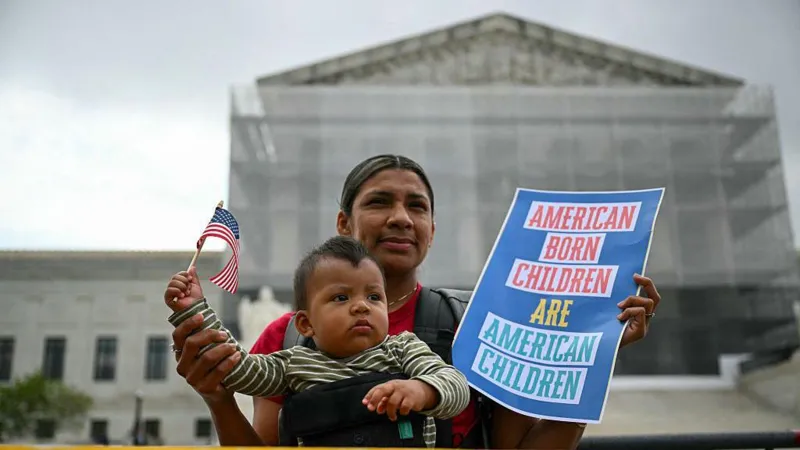Supreme Court Ruling Boosts Trump’s Executive Authority
On Friday, the U.S. Supreme Court delivered a major win to former President Donald Trump—and to future presidents—by limiting the power of lower courts to block executive orders.
Speaking from the White House briefing room, Trump celebrated the decision as a “big, amazing victory,” calling it a milestone for the Constitution, separation of powers, and the rule of law.
The ruling not only affects Trump’s controversial executive order aimed at ending birthright citizenship but also empowers the executive branch to move forward with various policies that were previously stalled by court injunctions.
Impact on Birthright Citizenship
The court’s decision allows Trump’s order to end automatic citizenship for children born in the U.S. to undocumented immigrants to take effect in one month. However, the justices left room for legal challenges, suggesting lower courts can still block parts of the policy for those who have legal standing.
Implementing the order will be complicated. Birth certificates are handled by state governments, many of which—particularly Democrat-led states—do not track parental citizenship and may resist enforcing the federal policy.
Justice Amy Coney Barrett, writing for the majority, acknowledged the complexity, stating that lower courts should determine whether narrower injunctions are warranted. She noted that states are concerned about financial and administrative burdens caused by changes to citizenship-related benefits.

Trump’s Response
Trump praised the ruling as a “giant win” and claimed it would curb abuses of the immigration system, referring to birthright citizenship as a “hoax.” His Attorney General, Pam Bondi, added that the Supreme Court is expected to take up the broader legal question of ending birthright citizenship in its next session in October.
Expanded Presidential Powers
More broadly, the court’s decision significantly reduces the ability of federal district courts to issue nationwide injunctions, a tool that has often been used to block executive actions.
Presidents from both parties have long criticized this judicial practice. Trump, in particular, had seen at least 25 of his executive actions blocked by lower courts between his inauguration and April 2020, according to the Congressional Research Service.
Now, with the new legal precedent, the administration—and future administrations—can more effectively implement policies on issues such as immigration, foreign aid, and federal employment without immediate interference from lower courts.
During past administrations, similar judicial roadblocks were faced. For instance, courts blocked President Biden’s environmental and student loan policies, as well as President Obama’s attempts to expand immigration protections and employee benefits.
Future Implications
While courts can still strike down unconstitutional actions, the new ruling shifts more initial power to the presidency. The Supreme Court emphasized that any future injunctions must follow this updated framework and adhere to equitable principles.
Ultimately, this decision strengthens the executive branch, giving current and future presidents greater latitude to act—at least until higher courts weigh in.



Pingback: Diving into The New York Times "Best Films of the 21st Century" List - News PSR